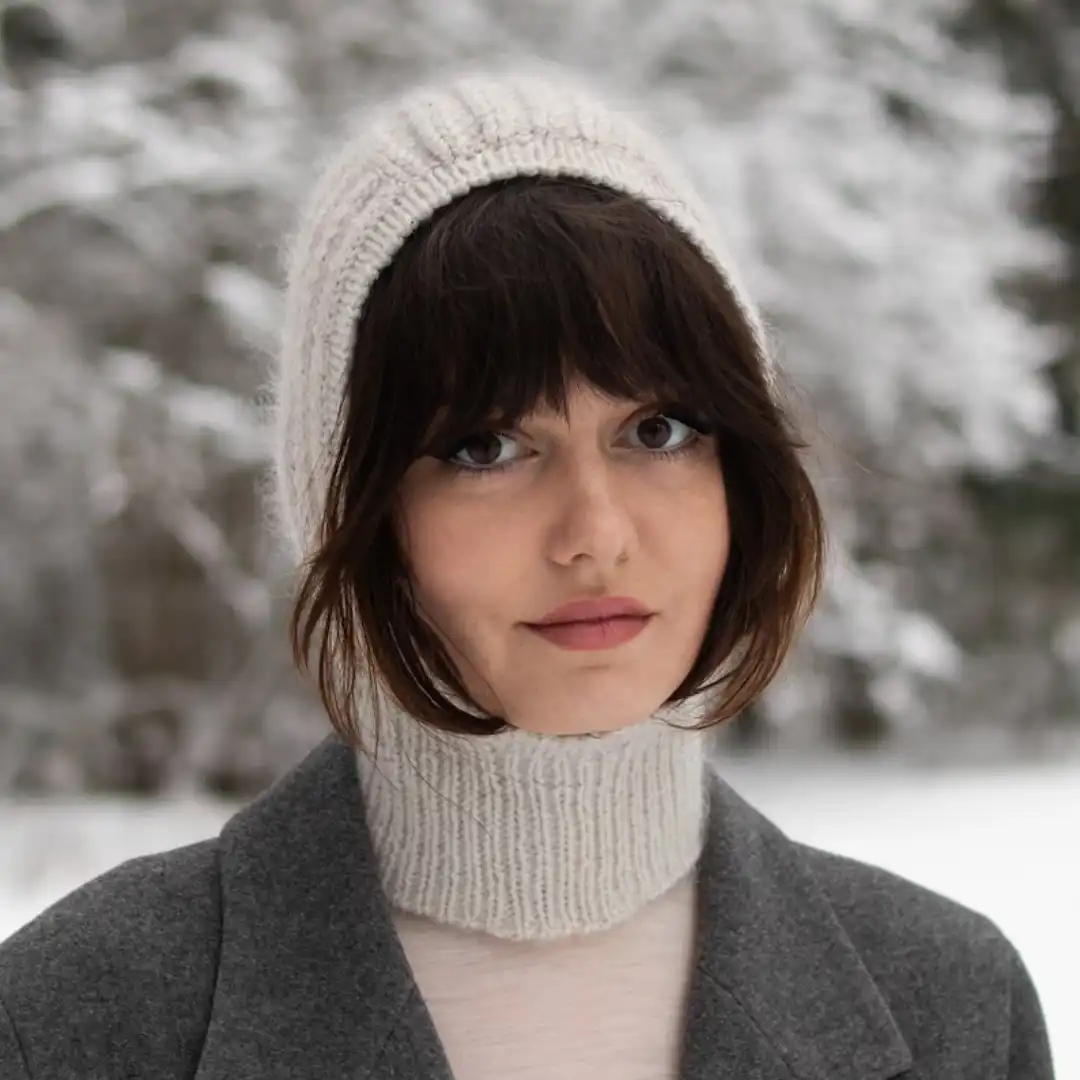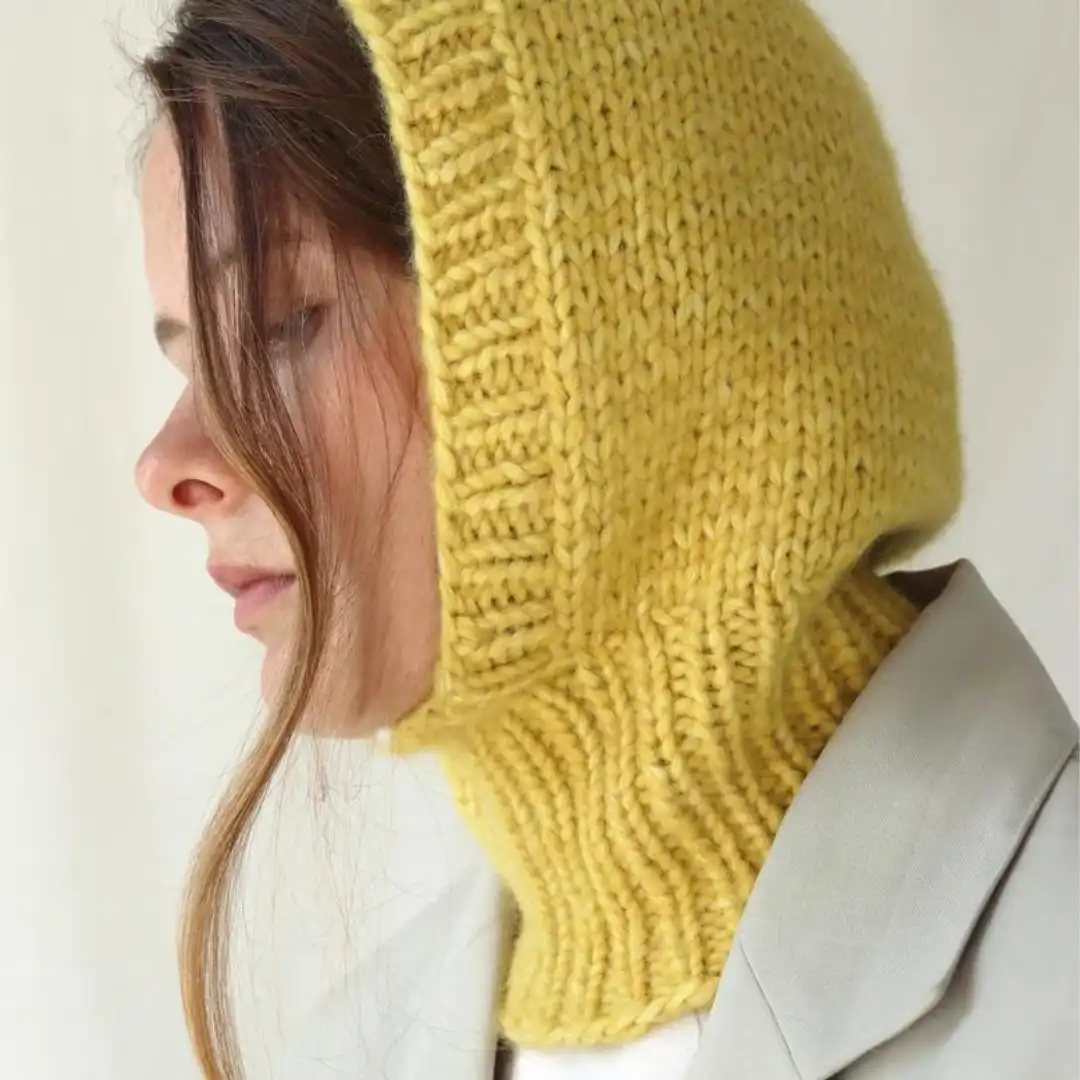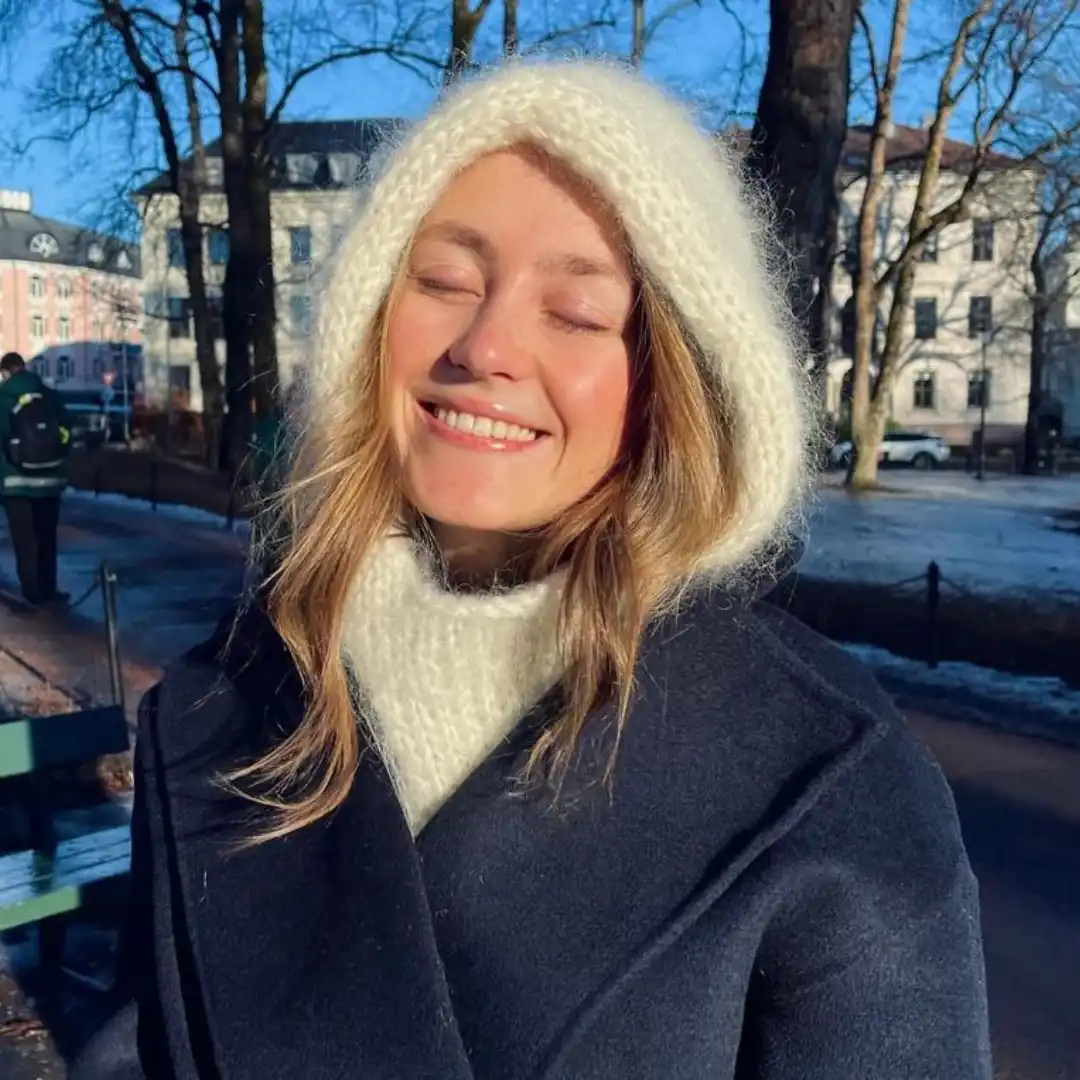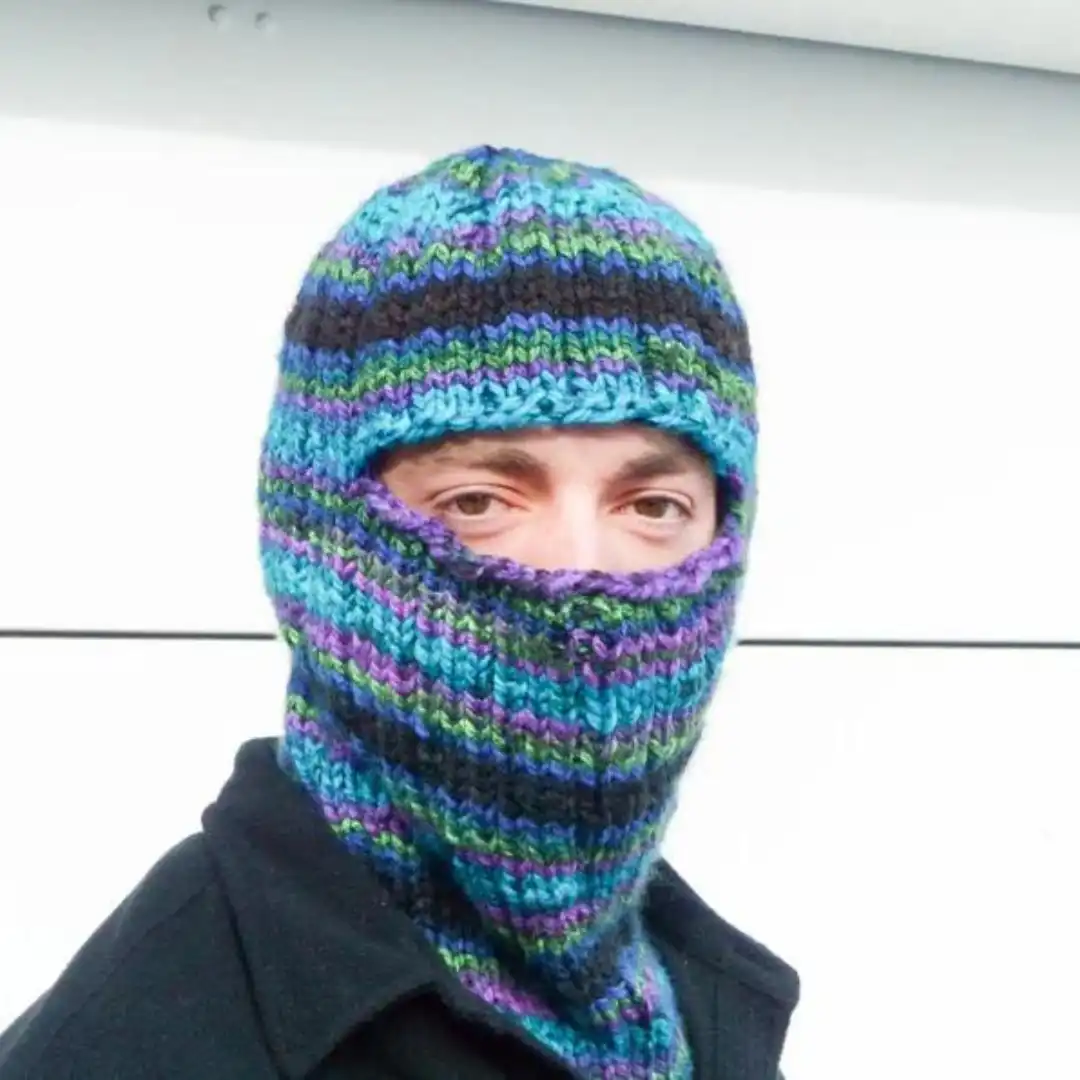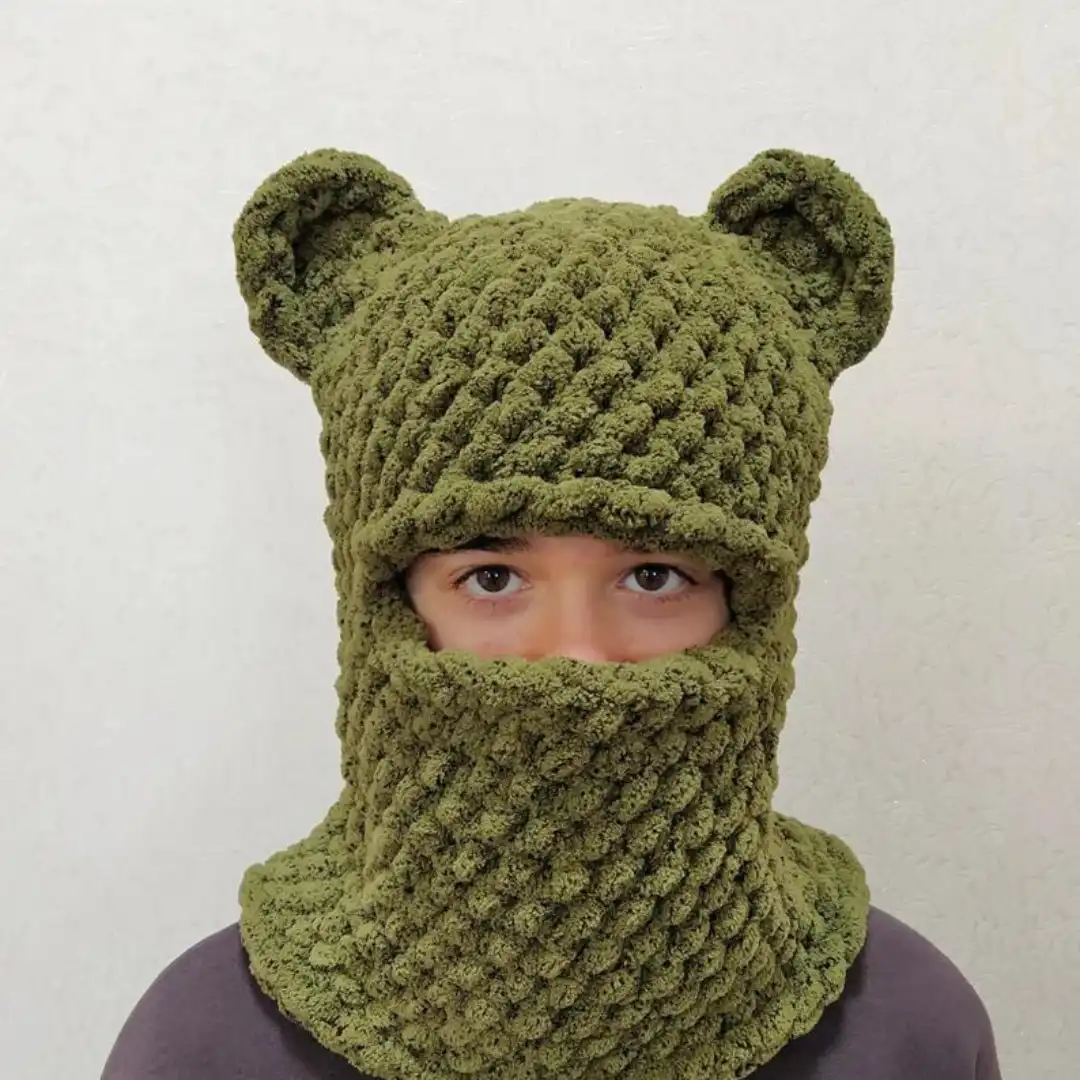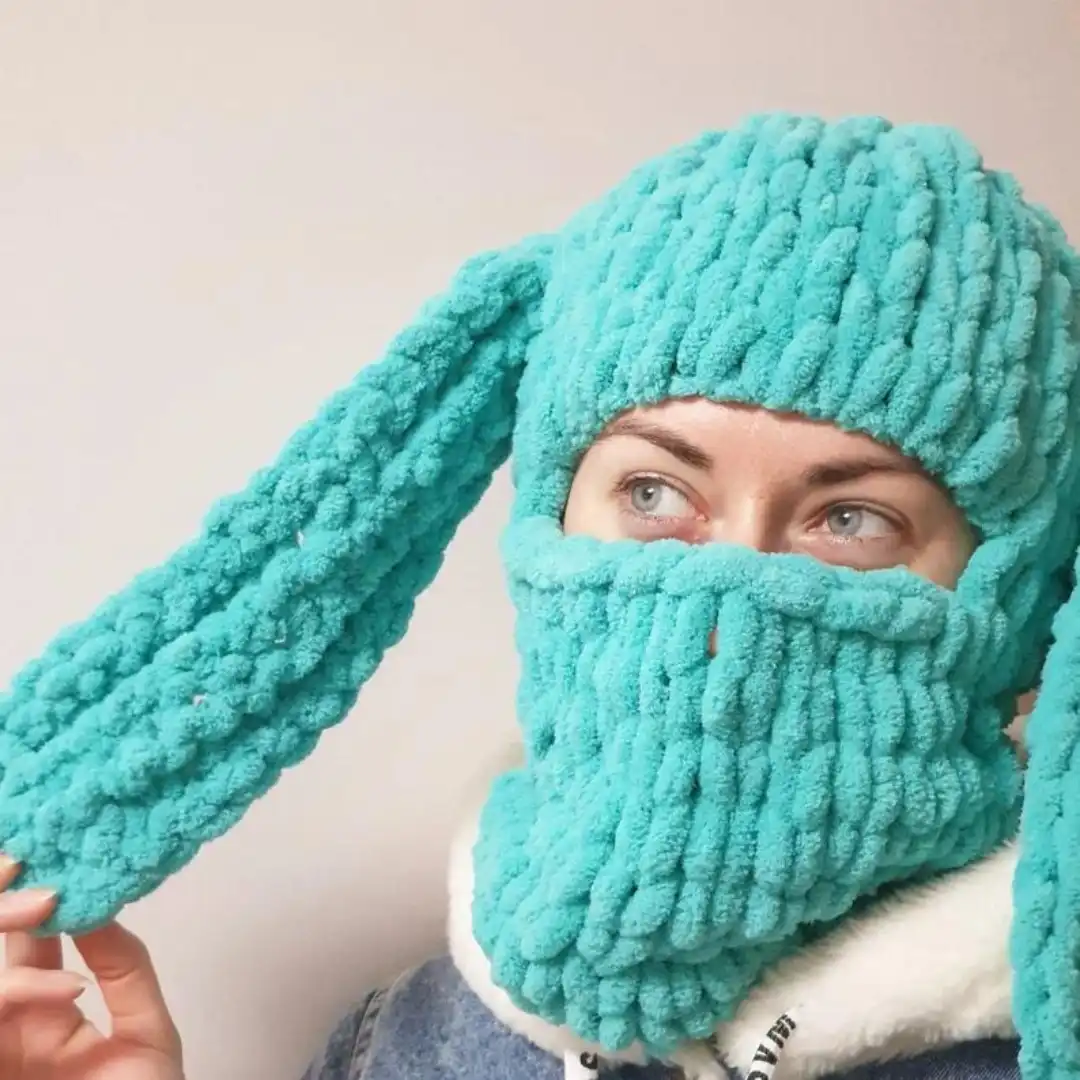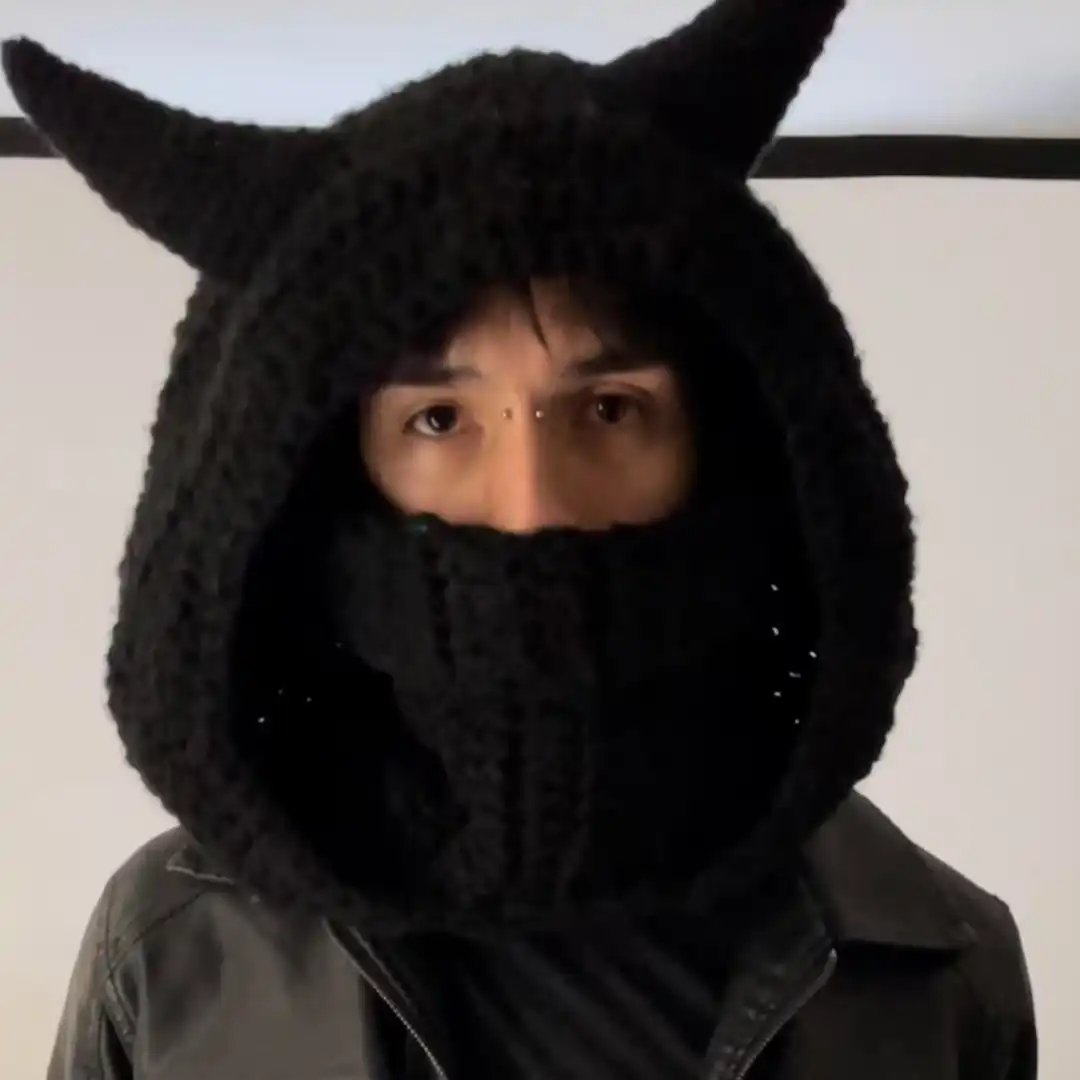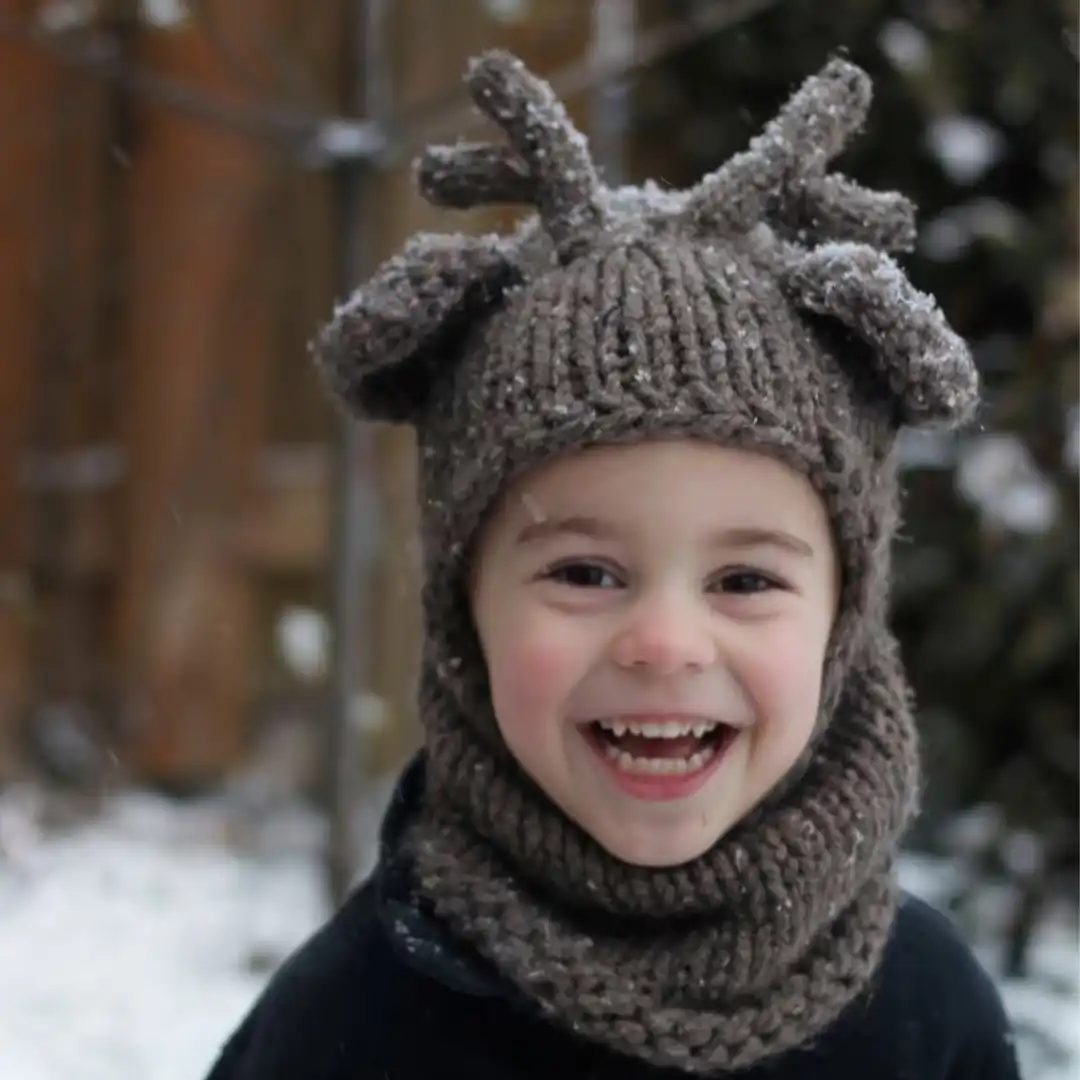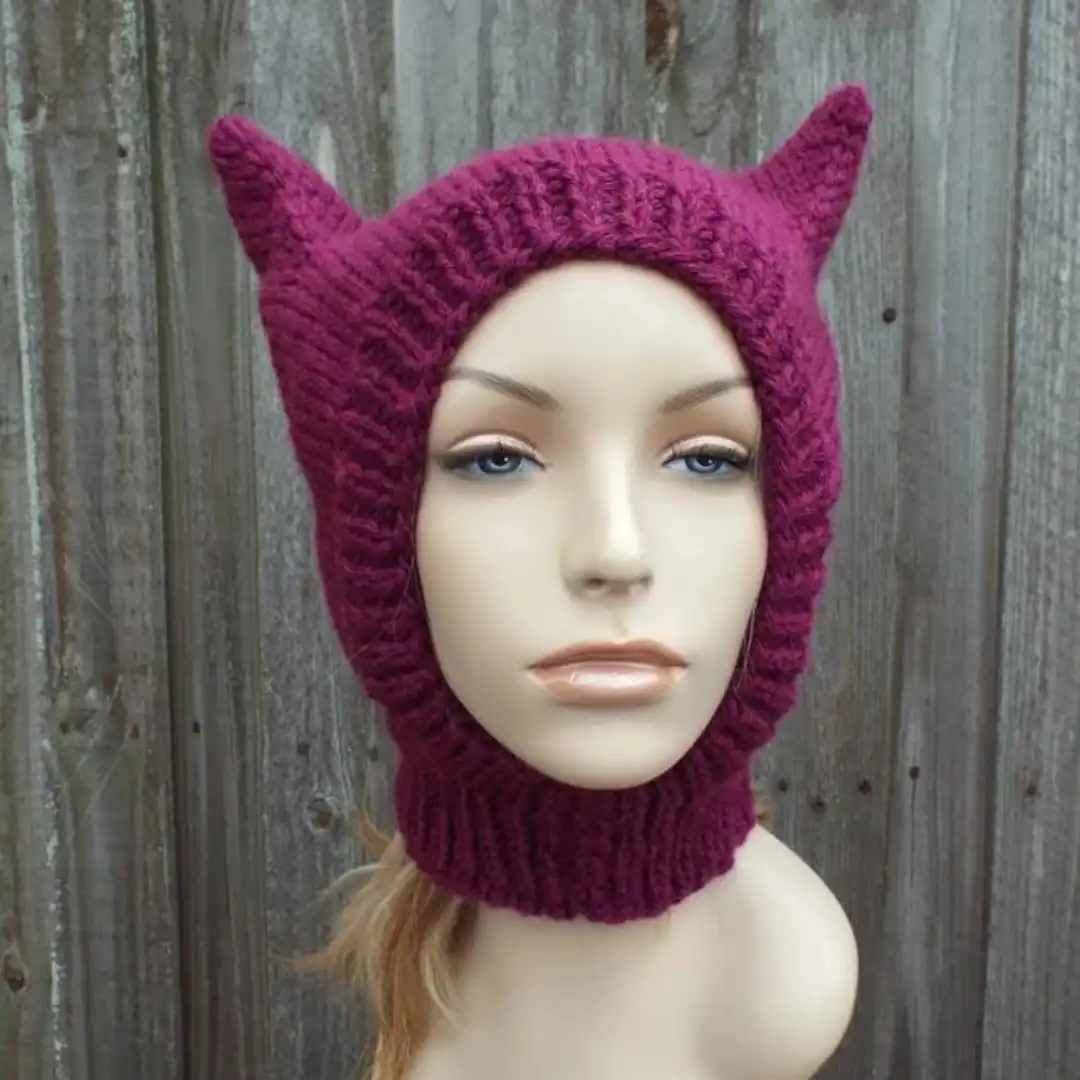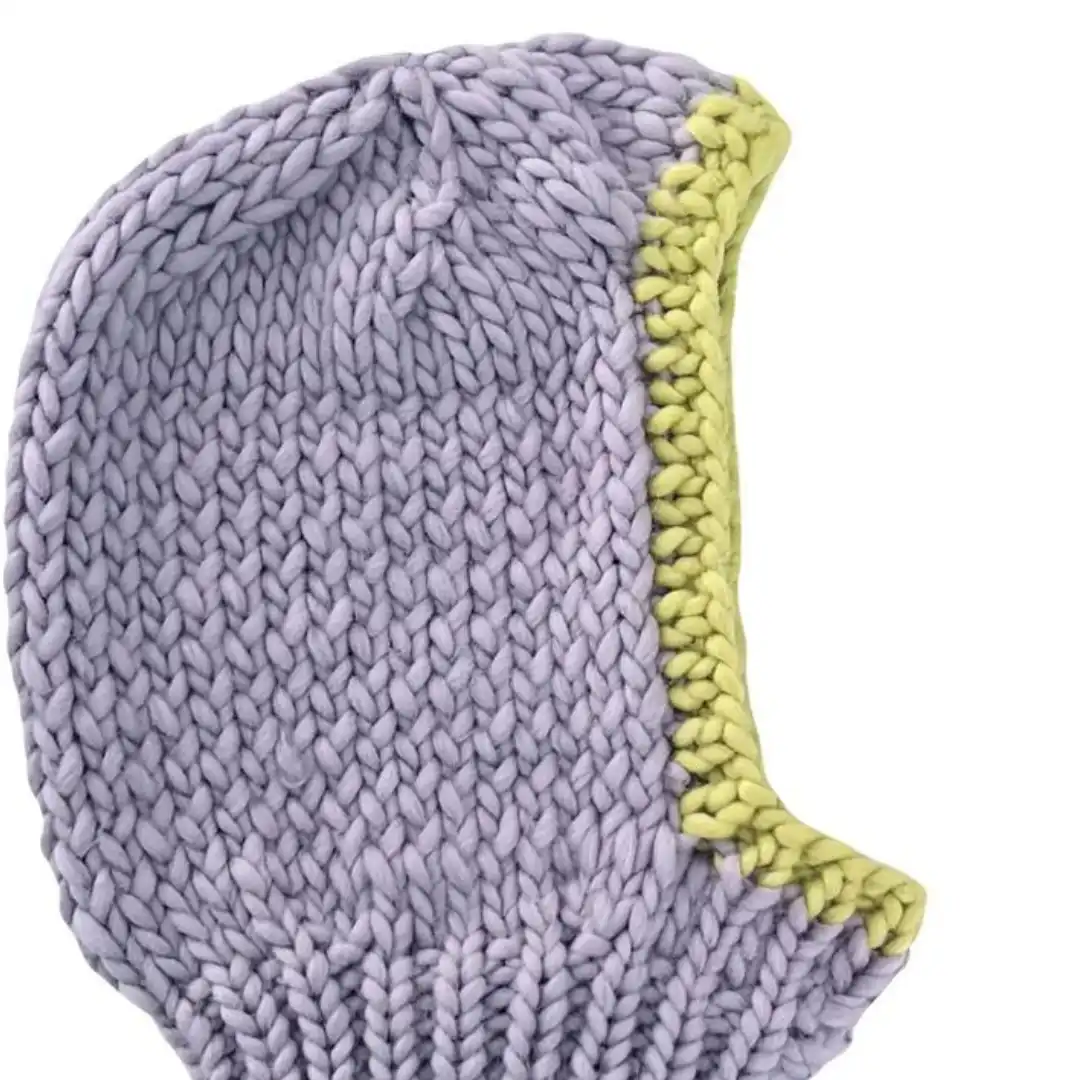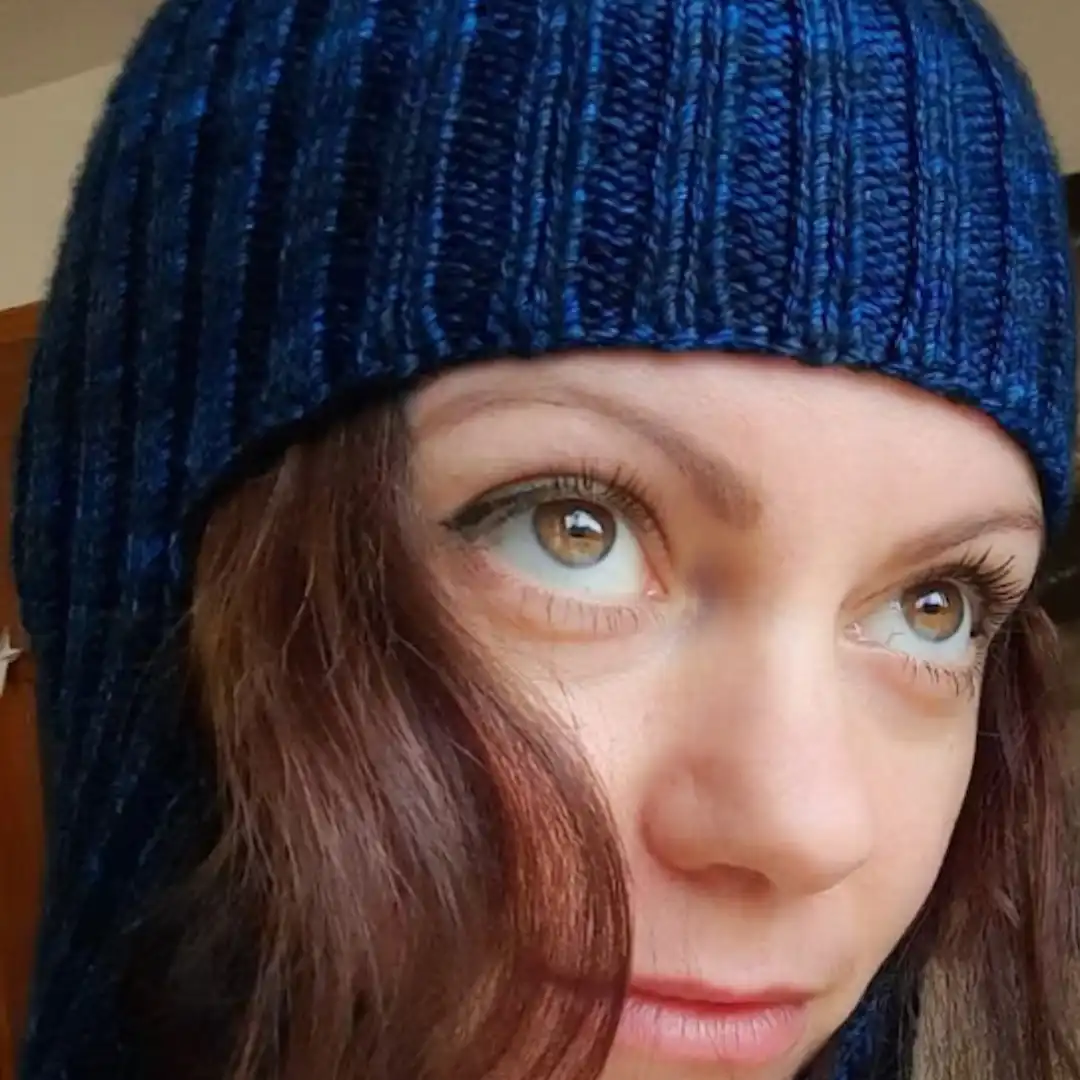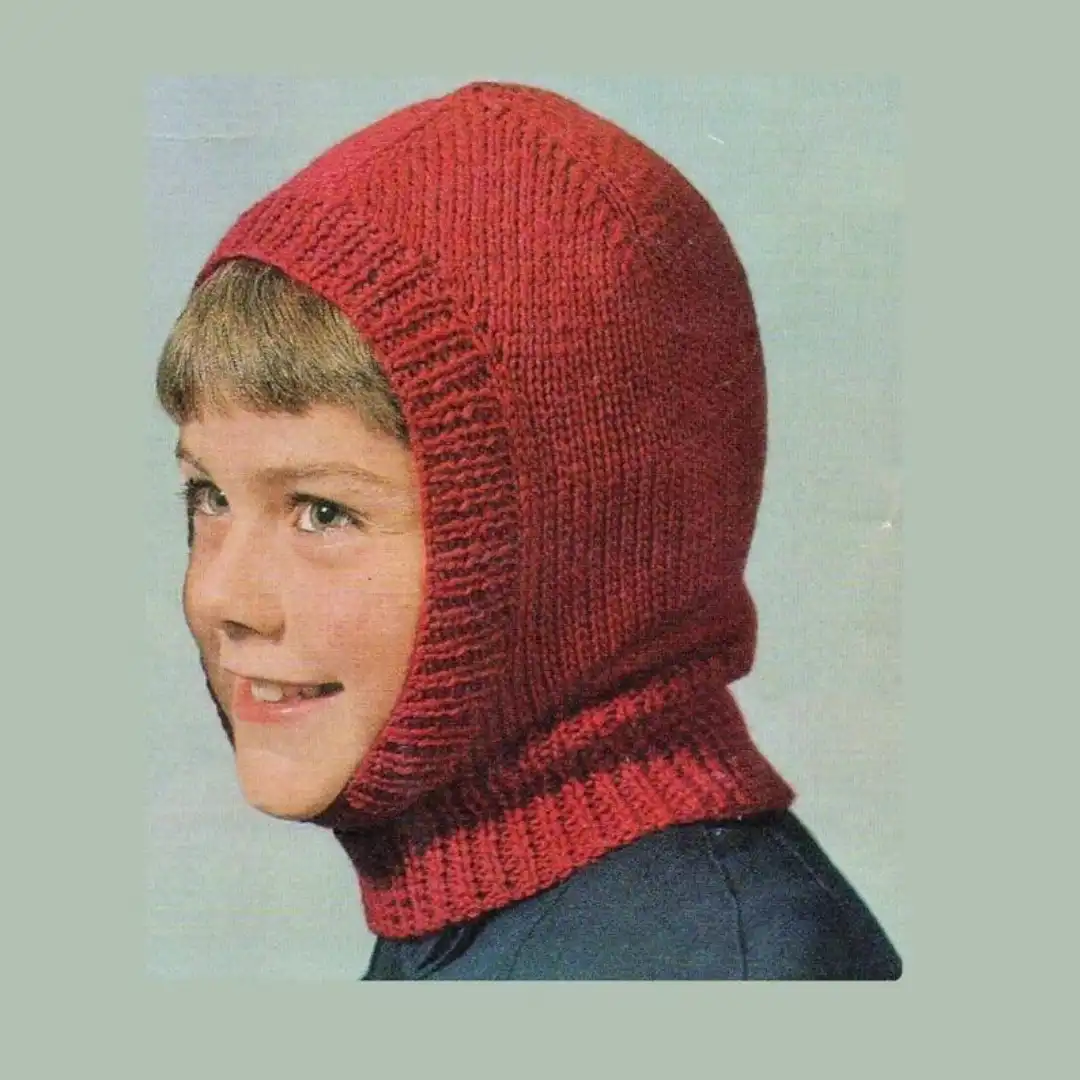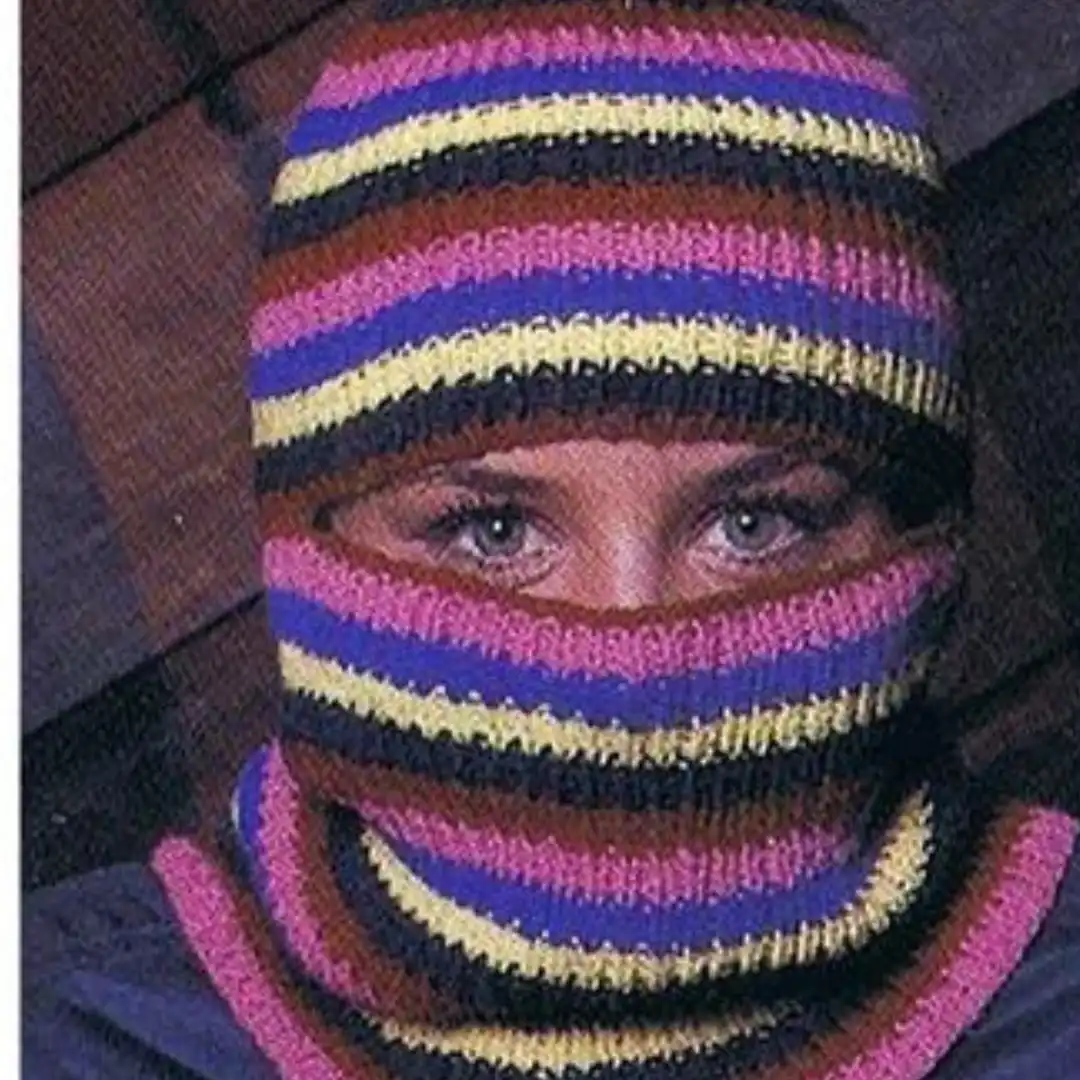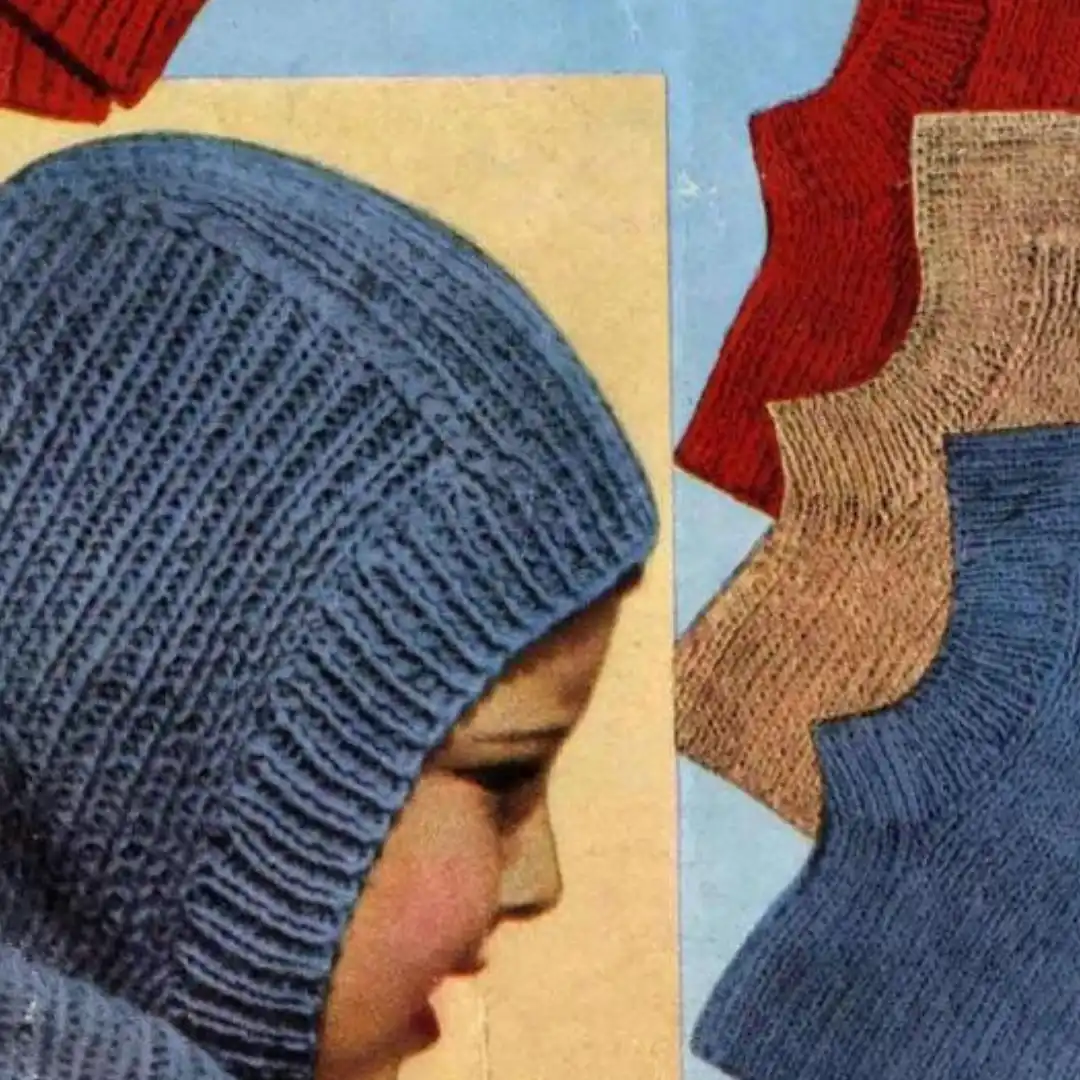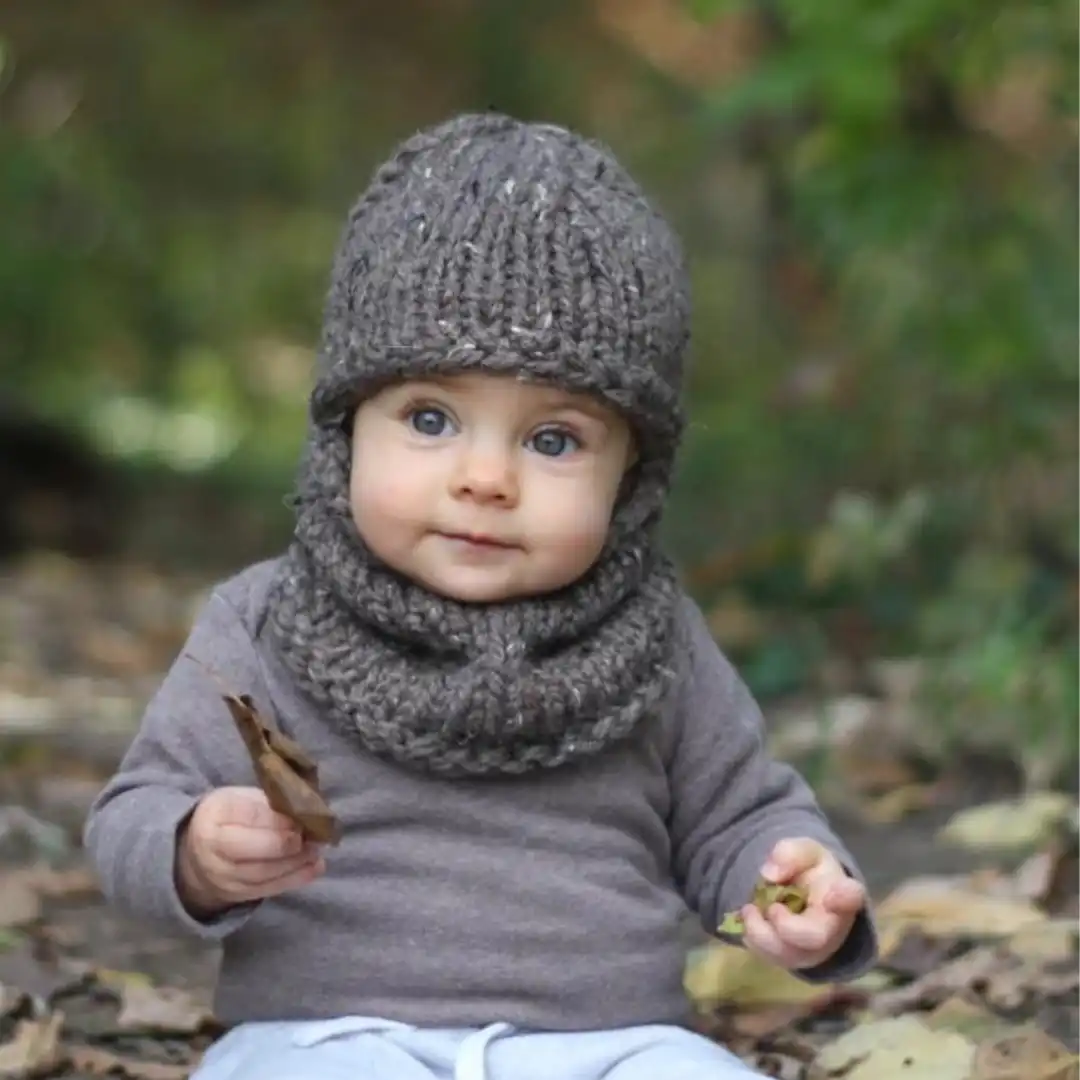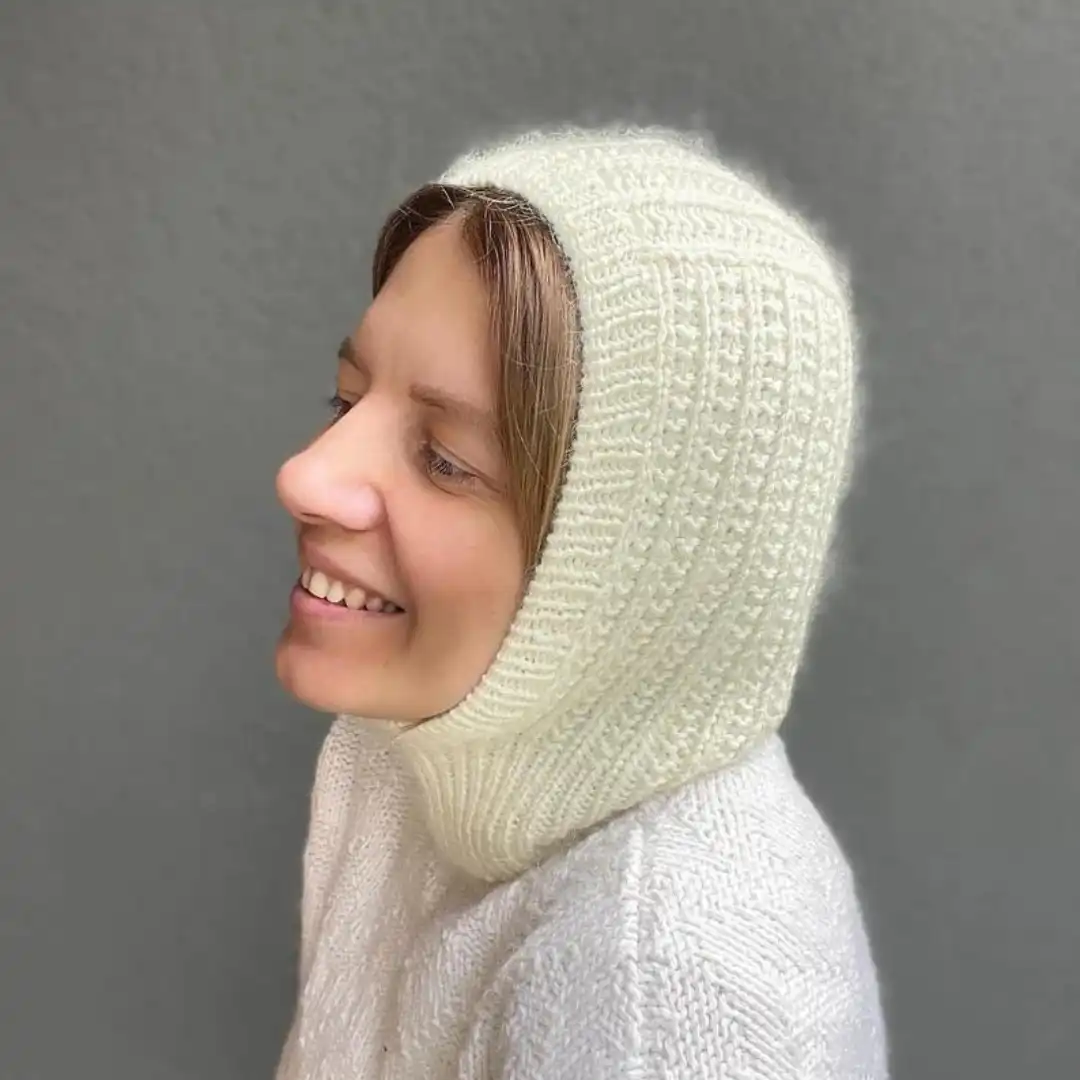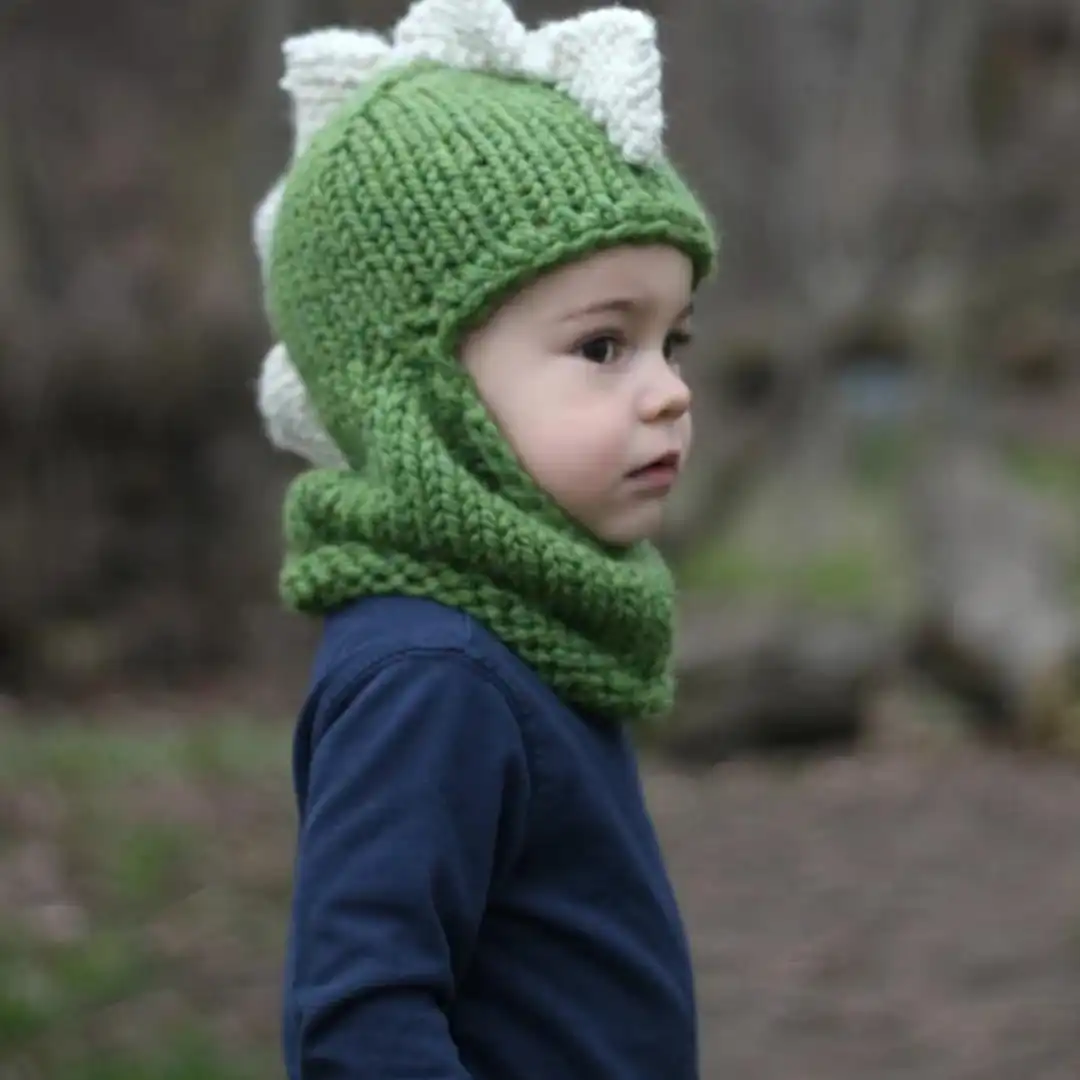Are you ready to cozy up and knit your way through the winter season? Well, I’ve got just the thing to keep you warm and stylish – 25 Free Modern Balaclava Knitting Patterns

As an expert knitter, I can tell you that balaclavas are not just for bank robbers anymore; they’re a fantastic solution to the chilly weather problem, and I’m here to show you the best way to create your own.
The biggest advantage of balaclavas is their versatility. They’re one of the best accessories to inspire your knitting for all ages, from adorable baby designs to chic adult styles.
But what’s the one thing we all need in a knitting project? Easy-to-follow patterns, of course! That’s where my top picks come in. These patterns are some of the easiest to follow and the most effective in keeping you warm during those frigid days.
Popularity & Versatility Of Knitting Patterns
As a knitter, I’ve always been drawn to balaclavas for their practicality and warmth. I’ve seen their popularity soar, and it’s no wonder why.
The best part? You can customize them to suit anyone’s needs and preferences. It’s incredible how much balaclava knitting patterns have evolved in recent years, offering various styles and designs to cater to diverse tastes.
The modern balaclava patterns with full-face openings have caught my eye lately. They add a stylish and versatile twist to the classic design. With these patterns, I’ve found the perfect way to create a balaclava that keeps you warm while looking chic.
But here’s the real magic – balaclava knitting patterns are incredibly adaptable. Depending on your preferences, you can craft them in various ways, experimenting with different yarn types, thicknesses, or knitting techniques. It’s one of the easiest and most effective ways to stay cozy and stylish during the cold months!
Essential Tools & Materials
Knitting a balaclava requires several essential tools and materials to ensure a successful project. Here’s a list of what you’ll need:
Yarn: Choose a yarn suitable for the balaclava’s intended use. Wool or wool-blend yarns are excellent choices for warmth and insulation. The amount of yarn you need will depend on the pattern and size you’re making.
Knitting Needles: Select knitting needles that match the recommended size in your chosen balaclava pattern. Typically, circular or double-pointed needles are used for knitting in the round. Please ensure they are comfortable to hold and appropriate for your yarn weight.
Stitch Markers: Stitch markers help you keep track of pattern repeats or shaping points in your balaclava. They are convenient when knitting in the round to mark the beginning of rounds.
Tapestry Needle: A tapestry needle is essential for weaving in yarn ends and sewing any seams if the pattern requires it.
Scissors: A good pair of scissors is needed for cutting yarn and trimming loose ends.
Measuring Tape: To ensure proper sizing and fit, have a measuring tape on hand to check your gauge and measure your progress as you work.
Balaclava Pattern: Choose a knitting pattern that suits your style and skill level. Ensure you have a printed or digital copy of the pattern for reference.
Stitch Holder or Waste Yarn: These hold stitches temporarily when shaping the face opening or other parts of the balaclava.
Row Counter: A row counter can help you keep track of the number of rows or rounds you’ve completed, which is especially useful for complex patterns.
Blocking Materials: Blocking mats, pins, and a spray bottle help block your finished balaclava to shape it and set the stitches.
Optional Embellishments: Depending on your design and preferences, you may want additional materials such as buttons, ribbons, or decorative elements to enhance the balaclava’s appearance.
Abbreviations For Knittings Balaclavas
You may encounter various knitting abbreviations in patterns when knitting balaclavas or any other knitting project. Here are some standard knitting abbreviations you might come across:
K – Knit: This basic stitch involves inserting the needle into the stitch from the front, wrapping the yarn around the needle, and then pulling it through to create a new stitch.
P – Purl: Purling is another fundamental stitch. Insert the needle into the stitch from the back, wrap the yarn around the needle, and pull it through to create a new stitch.
K2tog – Knit Two Together: This is a decrease stitch where you knit two stitches together as one, reducing the stitch count by one.
P2tog – Purl Two Together: Similar to K2tog, this is a purl decrease where you purl two stitches together.
M1 or M1L – Make One or Make One Left: These increased stitches involve picking up the bar between two stitches from front to back and knitting it to create a new stitch.
M1R – Make One Right: Like M1L, you pick up the bar between two stitches from back to front and knit into it.
YO – Yarn Over: This creates an eyelet or an extra stitch. Simply wrap the yarn around the needle from front to back.
SSK – Slip, Slip, Knit: A left-leaning decrease where you slip two stitches individually as if to knit, then insert the left needle into the front loops of the slipped stitches and knit them together.
CDD – Center Double Decrease: This centered decrease involves slipping two stitches as if to knit, knitting the next stitch, and then passing the slipped stitches over the knit stitch.
BO – Bind Off: Finish your knitting by securing the stitches and creating an edge.
CO – Cast On: The initial process of adding stitches to your needle before you begin knitting.
RS – Right Side: Indicates the side of the work that is meant to be the “public” or visible side of the project.
WS – Wrong Side: Refers to the side of the work that is usually not visible when wearing the finished item.
RELATED: 33 Dress Knitting Patterns Create Your Fashion Masterpieces
Which Is The Best Yarn To Knit Balaclavas?
When knitting balaclavas, choosing the suitable yarn is crucial to achieving the desired warmth, comfort, and style. As an experienced knitter, I’ve explored various yarn options for balaclavas, and each type offers its advantages. Let’s discuss some popular yarn choices from my first-person perspective:
Wool Yarn: Wool is a classic choice for balaclavas due to its exceptional insulating properties. It provides excellent warmth, making it perfect for cold weather. Merino wool, in particular, is soft and comfortable against the skin, making it a top pick for balaclavas. The elasticity of wool ensures a snug fit, and it’s naturally moisture-wicking, helping to keep you dry.
Wool Blends: Wool blends are versatile and combine the warmth of wool with the benefits of other fibers. Blending wool with acrylic or nylon can enhance durability and reduce itchiness, making it an excellent choice for those with sensitive skin. These blends also maintain their shape well.
Alpaca Yarn: Alpaca yarn is known for its luxurious softness and warmth. It’s an excellent choice for balaclavas if you want a cozy and comfortable feel. Alpaca fiber has natural moisture-wicking properties but may be less elastic than wool, so consider adding some wool or other fibers for structure.
Acrylic Yarn: Acrylic yarn is a budget-friendly option that offers good insulation and is often less scratchy than pure wool. It’s easy to care for, making it a practical choice for everyday wear. However, it may not provide the same level of warmth as wool or natural fibers.
Cashmere Yarn: Cashmere is a top choice if you’re looking for the ultimate luxury and softness. It’s incredibly soft and provides excellent insulation. Remember that it’s also one of the pricier options, but the comfort is unmatched.
Cotton Yarn: While not as warm as wool or animal fibers, cotton is a breathable option for transitional seasons or milder climates. It’s soft and hypoallergenic, making it suitable for those with wool allergies.
Bamboo Yarn: Bamboo yarn is silky and smooth, with natural moisture-wicking properties. It’s a breathable choice, making it suitable for balaclavas intended for active wear. It may not be as warm as wool but offers comfort and drape.
How Much Yarn Do I Need To Knit A Balaclava?
Determining how much yarn you need to knit a balaclava depends on several factors, including the pattern you’re using, the yarn weight, and your gauge. Generally, balaclavas don’t require a substantial amount of yarn compared to larger projects like sweaters or blankets.
You’ll typically need around 150 to 200 grams of yarn for a standard adult-sized balaclava. However, it’s essential to check your chosen pattern’s specific yarn requirements and follow the recommendations provided. You’ll require less yarn if you’re making a balaclava for a child or using a smaller yarn weight.
To ensure you have enough yarn, buying a little extra is a good practice, especially if you’re working on a complex pattern or want to add extra length or embellishments. Extra yarn can also help swatch and make any necessary adjustments during the knitting process.

Understand Knitting Stitches & Techniques
Understanding knitting stitches and techniques is essential for any knitter. Start by learning the basic stitches: knit and purl. Practice until they’re second nature. Then, explore more complex stitches like cables, lace, and colorwork. Utilize instructional videos, books, or classes for guidance.
Gauge, another crucial aspect, determines how tightly or loosely you knit. Swatch before starting a project to ensure the right gauge.
Finally, mastering techniques like increasing, decreasing, and seaming is vital for shaping and finishing. Continuous practice, patience, and a willingness to learn from mistakes are vital to becoming proficient and tackling many beautiful knitting projects.
Techniques For Knitting Balaclava
As a knitter, I’ve learned that when tackling a balaclava project, you must familiarize yourself with the techniques and stitches involved. Here are some key points I always consider as I embark on my balaclava knitting journey.
First and foremost, choosing a suitable yarn is essential. Opt for threads known for insulating properties, like wool or wool blends, to ensure your balaclava is warm and cozy.
I start with the appropriate number of stitches per pattern when casting on. To ensure flexibility in the finished piece, I prefer using a stretchy cast-on technique such as the German Twisted Cast-on or Long-Tail Cast-on.
Many balaclava patterns call for knitting in the round to achieve seamless construction. You must familiarize yourself with circular or double-pointed needles and learn to join and work in the round without creating unsightly gaps.
In addition to basic knit and purl stitches, some balaclava designs incorporate textured patterns. For instance, the Korshavn Balaclava uses a basketweave pattern. Before I start, I take the time to understand the stitch pattern, ensuring I can accurately read charts or written instructions.
Shaping the balaclava is another critical step. It typically consists of three main components – the neck, head, and face opening. I often encounter various shaping techniques, including increases, decreases, and short rows. For instance, in the Gatan Balaclava pattern, I’ve learned simple yet effective shaping techniques to ensure a better fit and add visual interest.
Once the knitting is complete, I focus on finishing touches like weaving in ends, blocking the piece, and adding ribbing around the face opening. These details give the balaclava a polished and comfortable finish.
RELATED: 30 Unique Patchwork Blanket Knitting Patterns Knit Your Way To Coziness
How Many Stitches Are Required To Cast On For Knitting Balaclava?
When I dive into knitting a balaclava, one of the initial challenges is figuring out the number of stitches to cast on. This number isn’t set in stone; it depends on size, yarn choice, and needle size. So, let me share some handy guidelines I use to help determine the correct number of stitches when starting a balaclava project.
First and foremost, I consider the size of the balaclava I’m aiming for. If it’s for an adult, I generally need more stitches than one meant for a child. For example, when knitting an adult’s balaclava with bulky yarn and size 10.5 (6.5mm) needles, I typically cast on around 56 stitches. On the other hand, a child’s balaclava might require fewer stitches.
Next, the type of yarn I choose plays a significant role. Thicker, bulkier yarns demand fewer stitches, while thinner ones might need more. I always check the knitting pattern’s recommendations for yarn weight and the corresponding cast-on stitch count.
Lastly, the size of the knitting needles also matters. Larger needles generally mean fewer stitches, while smaller ones require more. It’s crucial to understand how the interplay between needle size, yarn weight, and stitch count affects your balaclava’s final size and fit.
Select the correct balaclava pattern, yarn, and needle size to match your preferences. By considering these factors, you’ll confidently determine the perfect number of stitches to cast on for your knitting balaclava project.
Is It Beginner Friendly?
Knitting a modern balaclava can be beginner-friendly, depending on your chosen pattern. Some balaclava patterns are designed simply, making them accessible to novice knitters. Look for patterns labeled as “beginner” or “easy” and those with clear instructions.
Basic balaclavas usually involve knit and purl stitches and simple shaping techniques. However, more intricate designs with textured patterns or complex shaping may be better suited for intermediate or advanced knitters.
Regardless of your skill level, starting with a straightforward balaclava pattern and gradually progressing to more challenging ones can be a great way to build your knitting skills and create cozy, stylish accessories.
How To Knit A Beginner-Friendly Modern Balaclava?
Knitting a beginner-friendly modern balaclava can be a rewarding project. Here are step-by-step instructions to guide you through the process:
Skill Level
Easy
Materials You’ll Need
- Worsted weight yarn (about 150-200 grams)
- Size 8 (5.0mm) circular or straight knitting needles
- Stitch markers
- Tapestry needle for weaving in ends
- Scissors
Instructions
Gauge Swatch
- Begin with a gauge swatch using your chosen yarn and needles. Cast on 20 stitches and knit in stockinette stitch (knit one row, purl one row) for 4 inches.
- Measure your gauge; it should be approximately 18 stitches and 24 rows per 4 inches. Adjust your needle size if needed to match the gauge.
Cast On: Using the long-tail cast-on method, cast on 100 stitches. Place a stitch marker after the 50th stitch to mark the center.
Ribbing: Work in 2×2 ribbing (knit 2 stitches, purl 2 stitches) for about 1.5 to 2 inches to create a snug, stretchy edge.
Body of the Balaclava: Switch to stockinette stitch (knit all rows) and continue knitting until the piece measures approximately 8-10 inches from the cast-on edge, depending on the desired length.
Shaping:
- Begin shaping the crown of the balaclava by decreasing stitches.
- Row 1: Knit 2 together (K2tog), knit until 2 stitches remain before the marker, knit 2 together (K2tog), and slip the marker.
- Row 2: Knit all stitches.
- Repeat these two rows until 20-30 stitches are left, depending on your desired fit.
Face Opening
- Fold the balaclava in half vertically, aligning the edges. It creates the face opening.
- At the center front, bind off 20-30 stitches (or as many as you decreased in the previous step) for the face opening.
Neck: Continue knitting the remaining stitches in stockinette stitch for another 6-8 inches to cover the neck.
Finishing
- Bind off all stitches and weave in any loose ends using a tapestry needle.
- Fold the ribbed edge up to create the bottom of the face opening.
25 Types Of Balaclava Patterns
1. Woods Balaclava
Embrace the spirit of the outdoors with the Woods Balaclava. This knitting pattern is inspired by the natural beauty of the woods, featuring a cozy and practical design that keeps you warm during chilly adventures. Knit up this balaclava for a stylish and functional accessory that complements your outdoor lifestyle.
2. Hats Boho Knitting Pattern
Infuse bohemian flair into your winter wardrobe with the Hats Boho Knitting Pattern. This balaclava design incorporates boho elements, creating a unique and eclectic headwear piece. Knit up this pattern for a stylish and free-spirited accessory that keeps you cozy in chilly weather.
3. Mist Haven Balaclava Knitting Pattern
Step into the enchanting Mist Haven with this Balaclava Knitting Pattern. Inspired by misty landscapes, this pattern features intricate stitches that add texture and charm to the balaclava. Knit up Mist Haven for a cozy and ethereal accessory that transports you to a world of winter magic.
4. Knitting Pattern – Bug Hood
Embrace a playful and quirky style with the Bug Hood Knitting Pattern. This balaclava design mimics the appearance of a bug, adding a touch of whimsy to your winter wear. Knit up this pattern for a fun and eye-catching accessory that will stand out.
5. Fluffy Balaklava
Surround yourself in warmth and softness with the Fluffy Balaclava. This knitting pattern features plush yarn and a cozy design that resembles a gentle hug. Knit up this balaclava for a luxurious and comfortable accessory that keeps you snug in colder temperatures.
6. Snowboarding Mask
Hit the slopes in style with the Snowboarding Mask. This balaclava pattern is designed for snow enthusiasts, featuring a sleek and functional design that provides warmth and protection. Knit up this mask for a sporty and modern accessory that enhances your snowboarding adventures.
7. Cosy Balaclava Knitting Pattern
Stay wonderfully warm with the Cosy Balaclava Knitting Pattern. This design prioritizes comfort with its snug fit and soft yarn choice. Knit up this balaclava for a classic and timeless accessory that keeps you cozy during winter strolls or outdoor activities.
8. Balaclava With Bear Ears
Embrace a touch of whimsical charm with the Balaclava With Bear Ears. This knitting pattern features adorable bear ears, adding a playful and cute element to the traditional balaclava design. Knit this pattern for a delightful and quirky accessory perfect for winter outings.
9. Bunny Balaclava Pattern
Hop into winter with the Bunny Balaclava Pattern. This charming design incorporates bunny ears, creating a cute and whimsical accessory. Knit up this balaclava for a fun and endearing piece that brings a touch of playfulness to your winter wardrobe.
10. Horned Cowl Pattern
Unleash your inner fantasy with the Horned Cowl Pattern. This balaclava design features horn-like elements, creating a mystical and otherworldly accessory. Knit up this pattern for a bold and imaginative piece that adds a touch of magic to your winter attire.
11. Cow Balaclava
Add a touch of farmyard charm to your winter wardrobe with the Cow Balaclava. This knitting pattern mimics the appearance of a cow, creating a quirky and fun accessory. Knit up this balaclava for a playful and unique piece that stands out with a whimsical style.
12. The Reindeer Balaclava
Embrace the holiday spirit with The Reindeer Balaclava. This festive knitting pattern features reindeer antlers, adding a cheerful and seasonal touch to your winter ensemble. Knit up this balaclava for a merry and playful accessory that brings joy to chilly days.
13. Seamless Balaclava Pattern
Achieve a sleek and streamlined look with the Seamless Balaclava Pattern. This design prioritizes a seamless construction for a clean and modern aesthetic. Knit up this balaclava for a versatile and understated accessory that seamlessly integrates into your winter wardrobe.
14. Fruit Basket Balaclava
Bring a burst of fruity fun to your winter wardrobe with the Fruit Basket Balaclava. This knitting pattern features playful fruit-inspired motifs, creating a vibrant and whimsical accessory. Knit up this balaclava for a unique and cheerful piece that adds a touch of sweetness to your winter look.
15. Cat Balaclava Pattern
Embrace feline charm with the Cat Balaclava Pattern. This knitting pattern brings a playful twist to the classic balaclava design with adorable cat ears and whiskers. Knit this pattern for a cute and cozy accessory that cat lovers will adore.
16. The Weekend Hood Balaclava
Whether heading to the slopes or enjoying a winter weekend getaway, The Weekend Hood Balaclava is the perfect companion. This pattern combines style and functionality, providing warmth and coverage. Knit this balaclava for a versatile, stylish accessory that suits your weekend adventures.
17. Balaclava Easy Knitting Pattern
Dive into balaclava knitting with ease using the Balaclava Easy Knitting Pattern. This pattern is perfect for beginners, creating a cozy and practical accessory. It is designed with simplicity in mind. Knit up this balaclava for a straightforward and satisfying project.
18. The Fox Balaclava
Transform into a winter fox with The Fox Balaclava. This knitting pattern features fox-like details, including ears and a clever design that captures the spirit of these charming creatures. Knit up this balaclava for a playful and eye-catching accessory that adds a touch of nature to your winter wardrobe.
19. Children’s Balaclava Knitting Pattern
Keep little ones snug and stylish with the Children’s Balaclava Knitting Pattern. This design is tailored to the unique needs of children, providing warmth and comfort in a playful package. Knit up this balaclava for an adorable and practical accessory that keeps kids cozy during winter play.
20. Winter Knit Balaclava Pattern
Embrace the beauty of winter with the Winter Knit Balaclava Pattern. This design captures the essence of the season with textured stitches and a cozy fit. Knit this balaclava for a warm, stylish accessory that complements your winter wardrobe.
21. Vintage Helmets, Balaclavas, Mitt
Returning down memory lane with the Vintage Helmets, Balaclavas, and Mitt Patterns. This knitting pattern pays homage to vintage winter accessories, offering a collection of classic helmets, balaclavas, and mittens. Knit up these timeless pieces for a nostalgic and stylish winter ensemble.
22. The Bailey Balaclava
Stay warm and fashionable with The Bailey Balaclava. This knitting pattern features a modern, sleek design, providing style and functionality. Knit up this balaclava for a contemporary and versatile accessory that elevates your winter look.
23. Rib Balaclava
Add a touch of texture to your winter wardrobe with the Rib Balaclava. This knitting pattern showcases ribbed stitches, creating a cozy and stylish accessory. Knit this balaclava for a classic, timeless piece that pairs well with various winter outfits.
24. The Dino Balaclava
Transport little ones to a world of prehistoric fun with The Dino Balaclava. This knitting pattern features dinosaur-inspired details, making it a playful and imaginative accessory for kids. Knit up this balaclava for a roaring addition to their winter wardrobe.
25. Simple Chunky Balaclava
Keep it cozy and simple with the Simple Chunky Balaclava. This knitting pattern is designed for warmth and comfort, featuring chunky yarn and a straightforward construction. Knit up this balaclava for an easy and satisfying project that keeps you snug in colder weather.
Sizing And Measurements
When creating a balaclava pattern, it’s vital to consider sizing and measurements to ensure a comfortable and accurate fit for kids and adults.
First, decide the age range you want to cater to. Balaclava patterns typically come in sizes from small children to large adults. For instance, a way might be available in combined sizes like children 3-6, 7-10, teens, small adults, and large adults.
Head circumference is a crucial measurement for a well-fitted balaclava. To get an accurate size:
- Wrap a flexible tape measure around the widest part of the head, just above the eyebrows and ears.
- Make sure the tape is level and lies flat against the skin.
- Note the measurements in inches or centimeters, which will be used to determine the ideal pattern size.
When selecting a pattern, look for one that accommodates the head circumference measurements of your intended wearer. Remember that designs can be adjusted regarding the number of stitches, needle size, and gauge to fit various head sizes.
Finding prints specifically designed for smaller heads is vital for kids’ balaclava patterns. Some sources offer multiple patterns for children, like springorchidfiles.com, which lists five ways for kids. These patterns typically have smaller circumferences and height measurements to fit snugly on younger wearers.
Lastly, pay attention to the yarn weight, brand, and needle size the pattern recommends. These factors can affect the elasticity and fit of the finished balaclava. Make sure to choose suitable materials and tools to achieve the best results.
Tips And Tricks To Avoiding Mistakes
Knitting socks can be a rewarding but intricate project. Here are some tips and tricks to help you avoid mistakes and perfect your sock-knitting skills:
Use Lifelines: Insert a contrasting piece of scrap yarn through your stitches every few inches as a “lifeline.” If you make a mistake, you can rip back to the lifeline without losing your entire project.
Check Gauge: Always knit a gauge swatch to ensure your sock fits appropriately. Socks that are too tight or too loose can be uncomfortable.
Count Stitches: Regularly count your stitches to ensure you haven’t accidentally added or dropped any. Stitch markers can help you keep track of pattern repeats.
Use Stitch Markers: Place markers between pattern repeats or for the beginning of the round. They help you keep track of where you are in the sock.
Knit Two At A Time (Magic Loop or DPNs): Knitting both socks simultaneously can help ensure they turn out the same length and size.
Practice Picking Up Dropped Stitches: Mistakes happen. Learn how to pick up dropped stitches without having to rip out your work.
Learn Common Sock Heel And Toe Techniques: Different sock patterns use various methods for shaping heels and toes, such as short rows, gussets, or afterthought heels. Familiarize yourself with these techniques.
Use Self-Striping Or Self-Patterning Yarn: These yarns can make creating a visually appealing sock without complex colorwork easier.
Try Magic Loop Or DPNs: Experiment with different methods for knitting in the round to find which one you’re most comfortable with.
Blocking: Blocking your finished socks can even out stitches, improve fit, and make them look more polished.
Read The Pattern: Carefully read and understand the entire sock pattern before you start. Look for any unfamiliar techniques or abbreviations.
Measure As You Go: Frequently try on your sock to check for fit, especially after turning the heel and shaping the toe.
Use a Row Counter: Keep track of the number of rows or rounds to ensure symmetry between the socks and follow the pattern accurately.
Relax And Be Patient: Don’t rush. Knitting socks can be fiddly, especially for beginners. Take your time and enjoy the process.
Don’t Fear Mistakes: Mistakes are part of knitting. Embrace them as opportunities to learn and improve.
How To Block Knitted Balaclava?
Blocking your knitted balaclava is essential to ensure it holds its shape and fits well. This process helps to even out stitches, set the size, and give your balaclava a professional finish. Here’s how I like to block my knitted balaclavas step by step:
Step 1: Gather Your Supplies
First, I gather all the necessary supplies. I need a blocking mat, pins, a basin or sink for soaking a clean towel, and a mild detergent or wool wash. I also prepare my blocking surface by placing the mat somewhere flat and away from direct sunlight or heat sources.
Step 2: Soak Your Balaclava
I fill a basin or sink with lukewarm water and add mild detergent or wool wash. Then, I gently mix it in. I submerged my knitted balaclava in the water and let it soak for about 15-30 minutes. It allows the fibers to relax and absorb the water, making them more pliable for blocking.
Step 3: Remove And Drain
Carefully, I remove my balaclava from the water, being mindful not to stretch or twist it while it’s still wet. I gently squeeze the excess water and lay it on a clean, dry towel. Rolling the towel with the balaclava inside helps remove more moisture. I avoid wringing or twisting, which could damage the fibers and distort the shape.
Step 4: Arrange And Pin
Next, I lay my damp balaclava on the blocking mat, arranging it into the desired shape. I secure the edges by blocking pins, smoothing any wrinkles, and ensuring an even stitch pattern. It’s important to pin it to the correct measurements, and I sometimes use a tape measure for accuracy. If my balaclava has cables or textured elements, I maintain their definition as I block.
Step 5: Air Dry
I allow my balaclava to air dry completely, which usually takes 24 to 72 hours, depending on the yarn’s thickness and fiber content. I keep it undisturbed during this time to maintain its shape and size.
Step 6: Final Touch
Once my balaclava is fully dry, I carefully remove the blocking pins. It’s a gratifying moment as I admire my beautifully finished project. Now my knitted balaclava is ready to wear, looking more polished and fitting better than ever, thanks to the blocking process.

Suggestion To Add Personal Touch
Choosing a balaclava pattern that suits your style, consider adding personal touches to make it unique and special. Here are a few ideas to get you started:
- Experiment With colors: Don’t hesitate to play with different shades for your balaclava. You can create your stripe design or choose a solid color for a traditional look. Mixing and matching colors can add character and make your balaclava more visually appealing.
- Try Different Yarn Textures: When knitting or crocheting your balaclava, consider using various yarn textures to add depth and interest. Combining smooth and fluffy yarns or incorporating lace can give your balaclava a distinctive edge.
- Adjust The Pattern Size: Personalize the fit of your balaclava by adjusting the pattern to suit your preferences. Whether you prefer a snug fit or a looser hood, changing the pattern size can help you achieve your desired comfort.
- Add embellishments: Embellishments are a creative way to make your balaclava stand out. Add pom-poms, tassels, or tiny beads to elevate your balaclava’s design. You can embroider initials, symbols, or patterns to make it your own.
RELATED: 22 Cable Knitting Patterns Discovering Intricate Knit Designs
A Quick Recap
Balaclava patterns offer a world of possibilities to match your style and preferences. Whether you prefer practicality with ribbed stitches or love fashion-forward designs featuring cables, stripes, or lace, there’s a balaclava pattern for you.
Some even delve into traditional techniques like Fair Isle and Nordic motifs, while others sport unique features like pom-poms, tassels, and hoods.
You can find your perfect match with various materials, from chunky knits for warmth to openwork lace for a lighter feel. Buttoned necks, visors, and reversibility add extra flair. So, whether you need outdoor coziness or a chic winter accessory, balaclava patterns have got you covered. Ready to give them a try?
Frequently Asked Questions
I’m A Beginner Knitter. Can I Knit A Balaclava Pattern?
Yes, you can! There are beginner-friendly balaclava patterns available with clear instructions and simple techniques. Start with an easy pattern, and as you gain experience, you can try more complex designs.
What Type Of Yarn Is Best For Balaclava Patterns?
The choice of yarn depends on your preferences. Wool and wool blends are famous for warmth, but acrylic, alpaca, or other fibers can also be used. Match the yarn weight to the pattern’s recommendations for the best results.
How Do I Ensure A Proper Fit For My Balaclava?
Always check Your Gauge
- Always start the project to ensure a good fit.
- Adjust your needle size if necessary.
Consider measuring your head circumference to determine the correct size to knit.
Are Balaclava Patterns One-Size-Fits-All, Or Can I Customize Them?
Balaclava patterns often come in multiple sizes, allowing you to choose the best fit your needs. Some patterns also include instructions for customization so you can adapt them to your specific measurements.
Can I Add Extra Warmth Or Features To My Balaclava?
You can customize your balaclava by adding features like ear flaps, hoods, or a longer neck for added warmth. Be creative and modify the pattern to suit your preferences.
Are Balaclavas Suitable For All Ages?
Absolutely! Balaclava patterns are versatile and can be adjusted to fit various ages, from children to adults. Just choose the appropriate size and yarn for the intended wearer.
How Do I Care For My Knitted Balaclava?
Most balaclavas can be gently hand-washed in cold water with a mild detergent or wool wash. Lay them flat to dry to maintain their shape. Always check the care instructions provided with your chosen yarn.
- 30 Polo Sweater Knitting Patterns To Keep You Stylish On Every Occasion - January 1, 2024
- 21 Baby Blanket Knitting Kits To Wrap Bundle Of Joy With Love - January 1, 2024
- 15 Cashmere Knitting Kits For Fashionable Knits To Embrace Comfort And Style - January 1, 2024


